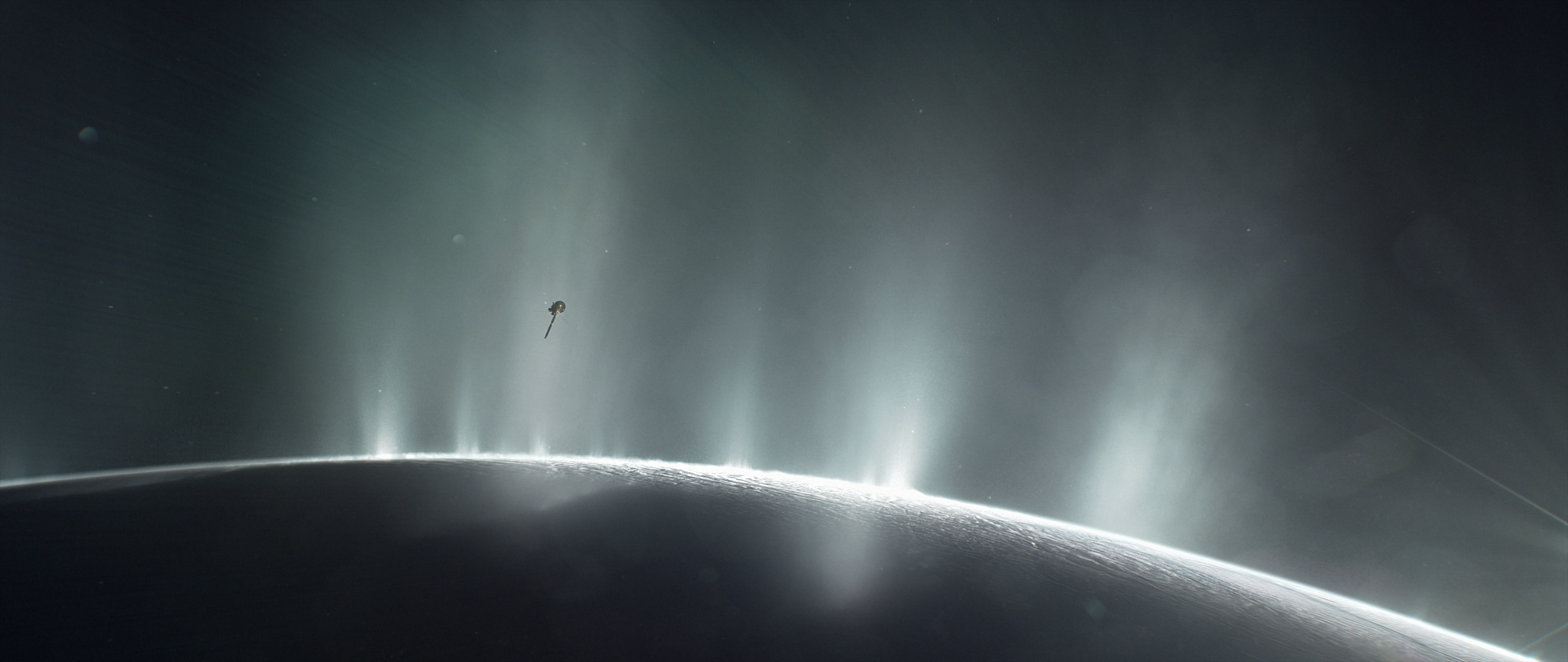Next stop, Enceladus? Scientists make their case for a mission to Saturn's icy moon

NASA is headed to Saturn's largest moon, Titan — but some scientists hope to convince the agency to send another mission to Titan's neighbor, Enceladus, to look for signs of life.
Enceladus is a tiny, icy world that scientists best know from NASA's Cassini mission to the Saturn system, which ended in 2017. During Cassini's tenure, the spacecraft determined that the moon has an ocean hidden below its icy crust. The probe also found that Enceladus spit plumes containing material from this ocean out into space. These plumes are the primary reason why scientists want a dedicated spacecraft to visit the world.
"Enceladus is the only confirmed current habitable environment beyond Earth, it's the only world meeting the canonical requirements for habitability," Amanda Hendrix, a planetary scientist at the Planetary Science Institute, said during a presentation coordinated by the National Academies of Sciences on March 31. "The next step is to search for signatures of life in the Enceladus ocean materials, and Enceladus makes it easy because it ejects its ocean material into space."
Related: Photos: Enceladus, Saturn's Cold, Bright Moon
Specifically, Hendrix argued that Enceladus should be a target for the next round of the same mission size that includes the new Dragonfly mission to Titan, as well as missions like the OSIRIS-REx asteroid mission, the Juno mission to Jupiter and the New Horizons mission to Pluto and the Kuiper Belt.
Two missions proposed during the most recent round did focus on Enceladus, but they did not make the final selection. Both Enceladus and Titan were listed together as the same potential type of destination, "ocean worlds." Because NASA didn't select an Enceladus mission, scientists are worried that the "ocean world" goal will now be considered under control, even though Dragonfly's visit to Titan will only teach us so much about Enceladus. The same limitation holds true of NASA's Europa Clipper, which will visit an icy moon of Jupiter that is superficially much more similar to Enceladus than Titan is.
"We now know that there's a lot of ocean worlds in our solar system and each as we currently understand it is unique and each offers something different to our understanding of ocean worlds," Hendrix said. "Enceladus is distinct from Europa and Titan."
Get the Space.com Newsletter
Breaking space news, the latest updates on rocket launches, skywatching events and more!
The most exciting reason Enceladus is so distinct from other ocean worlds in our solar system is those plumes shooting out of the moon near the south pole. These plumes mean that scientists wouldn't need to build a spacecraft that can land on and penetrate an icy shell to study the hidden ocean.
"This is my personal opinion, but if we're going after life in our solar system and we've got an ocean out there that's just spewing itself out into space and making it easy for us," Hendrix said, "let's go do it, let's not make things harder on ourselves by first trying to do a lander mission."
While Enceladus' plumes make its ocean more accessible to spacecraft, the innards of the world remain isolated enough that, if there is indeed life in its hidden ocean, it could have evolved independently of life, say, here on Earth. But right now, that is a possibility of a possibility, and the only way to begin navigating out of these "ifs" is to send a spacecraft to check out the ocean.
"This ocean at Enceladus could be a host to a whole separate genesis of life," Hendrix said. "It could be uninhabited or it could be in a prebiotic state, but regardless, any Enceladus mission exploring this ocean is going to provide groundbreaking discoveries."
- Saturn moon Enceladus' varied landscape dazzles in new photo
- A gift from Saturn: Icy moon Enceladus amid glowing rings (photo)
- Crescent Enceladus: Icy Saturn moon shines in Cassini photo
Email Meghan Bartels at mbartels@space.com or follow her @meghanbartels. Follow us on Twitter @Spacedotcom and on Facebook.
OFFER: Save 45% on 'All About Space' 'How it Works' and 'All About History'!
For a limited time, you can take out a digital subscription to any of our best-selling science magazines for just $2.38 per month, or 45% off the standard price for the first three months.
Join our Space Forums to keep talking space on the latest missions, night sky and more! And if you have a news tip, correction or comment, let us know at: community@space.com.

Meghan is a senior writer at Space.com and has more than five years' experience as a science journalist based in New York City. She joined Space.com in July 2018, with previous writing published in outlets including Newsweek and Audubon. Meghan earned an MA in science journalism from New York University and a BA in classics from Georgetown University, and in her free time she enjoys reading and visiting museums. Follow her on Twitter at @meghanbartels.
-
Bigrob215275 This is what ALL SPACE articles should be formatted like. Science and scientists should make their BEST CASE for the argument and STOP presenting positions or ideas as if they are resolved science. Alien Life Black Holes Dark energy Dark Matter and Dark Flow and String theory and the multitude of other IDEAS are theories and only early unsubstantiated ones at that. Be scientific and be more skeptical about presenting these ideas.Reply










